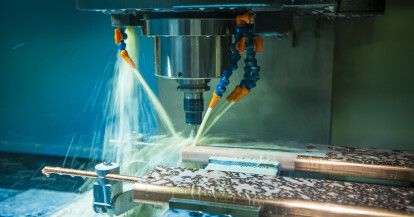Why is the Statue of Liberty copper?

Did you know that the Statue of Liberty didn't always have that distinctive shade of green, called gritty green?
What we see today is patina - the result of a natural oxidation reaction in copper. If it weren't for it, New York's symbol of freedom would have simply rusted away. Sculptures are not the only contribution of copper to our civilization. We uncover the secrets of copper's cultural possessions.
Copper versus the Atlantic - the Statue of Liberty's journey to America
The story of one of the world's most famous statues begins in... Norway. It is there, on the island of Karmøy, that the Vigsnes (or Visnes) copper mine is located, from which the copper used in the construction of the Statue of Liberty comes. To commemorate the Norwegian islet's role in this endeavor, a smaller version of the Statue of Liberty still stands there today.
However, Vigsnes is not the only seat of the "sister" Statue of Liberty - the prototype of the statue can be found in Paris, with which the further history of the sculpture is connected. Its main creators were Frenchmen - Frédéric Auguste Bartholdi (designer, sculptor) and Gustave Eiffel (designer). The statue was a gift from France to the United States on the occasion of the 100th anniversary of US independence. In 1884, it was given to the American ambassador in Paris to be later taken apart, transported overseas and erected at the mouth of the Hudson River into the Atlantic.
It is this water crossing that is associated with the choice of the main metal for the sculpture, which ultimately fell on copper. The statue was taken apart and was exposed to the destructive effects of the salty ocean - however, copper constructions are remarkably resistant to the adverse effects of external factors, including water.
Why did the Statue of Liberty change color from copper to green?
Why is the Statue of Liberty greenish today? After all, we tend to associate copper with shades of brown and red. However, patina, a naturally-occurring tarnish, has appeared on the sculpture, which has a protective function - thanks to it, copper does not corrode and can maintain its original properties for many years. What's more - damaged patina regenerates itself. It can have different shades, which depend on the composition of the air in the place.
How much copper is in the Statue of Liberty?
The Statue of Liberty weighs as much as 204 tons and it takes as many as 354 stairs to reach the top of the crown. It is one of the most famous copper monuments in the world.
Architecture with copper in the lead role
The use of copper in architecture was discovered a very long time ago - its plasticity, strength, high fire resistance, renewability and attractive color palette, including patina, meant that to this day we can still see copper roofing and facades on many buildings. An additional advantage is the metal's versatility - copper blends well with other materials, such as wood, stone, brick and glass. It fits both traditional and modern construction.
Examples of the use of copper in Polish architecture include:
- Hydropolis Environmental Education Center in Wroclaw,
- Kashubian Philharmonic in Wejherowo,
- Museum of the History of Polish Jews in Warsaw,
- Warsaw University Library building.
For those who want to see how copper presents itself in buildings in other countries, we recommend, for example:
- Experimentarium in Copenhagen,
- Faraday House in London,
- North Fitzroy Library and Community Hub in Melbourne,
- Archaeological Museum in Vitoria,
- Clip House in Madrid.
Bronze and brass, or copper in sculpture
Bronze is called an alloy of copper with tin or other element(s). Characteristically, the proportion of copper in this alloy is as high as 80-90%. Why have sculptors taken a liking to it since prehistoric times? Bronze can be used to create realistic forms rich in detail.
In contrast, another copper alloy, brass, has gained popularity because of its price. Brass is slightly cheaper than copper, but matches its durability.
Development of trade - copper coins
During the reign of the last ruler of Poland - Stanislaw August Poniatowski - there was, among other things, a mint at Wawel Castle. The coins created in Cracow were minted in copper - we are talking about shillings (boratines), half-pennies, pennies and trojaks - these were the names of the means of payment at that time.
Copper was, of course, inferior in value to precious metals - gold and silver. With the monetary reform of 1766, a new division of coins similar to Western currencies was introduced. Henceforth, 1 thaler was equal to 8 zlotys, which in turn amounted to 32 silver pennies, or 240 copper pennies.
Copper coins are not only the domain of Poles. For example, the denarius, which originally consisted mainly of silver, was later minted mainly of copper, among others, during the crisis of the Roman Empire, in France until the reign of Louis XVI or in Germany under the name of fenig in the 17th century. In Poland, the copper denarius functioned during the reign of Sigismund III Vasa.

Copper in everyday life
The use of copper does not end with sculptures, buildings and coins. It reaches much further and includes a significant part of the cultural possessions of many civilizations. Interestingly, its Latin name - cuprum - comes from Cyprus, from where copper was mined and supplied to countries on the eastern Mediterranean coast.
Among other things, copper was used to make:
- drills - in ancient Egypt holes were discovered in blocks of pink granite made precisely with copper drills;
- pipes for transporting water - here, too, we are referring to the country of the Pharaohs, where such a copper installation was discovered from around 2750 BC.
- disinfectants, wood preservatives, artificial fertilizers - in the Middle Ages chemists discovered numerous uses for copper sulfate;
- cookware and household items - thanks to its good heat conductivity, wear resistance and malleability, copper has been used since the 16th century to make cooking, baking, frying and food storage utensils, among other things;
- crucifixes, reliquaries, host chalices and other liturgical utensils - copper, often gilded, was present in temples;
- scales, weights - it was used in trade not only as a metal for minting coins.

As you can see, copper is not just a component of complex industrial installations. It is a metal that has accompanied us since the dawn of time, which confirms its reliability. Today we also know that it is renewable, so it fits perfectly into the needs and problems of the modern world - so it will stay with us for a very long time to come.



